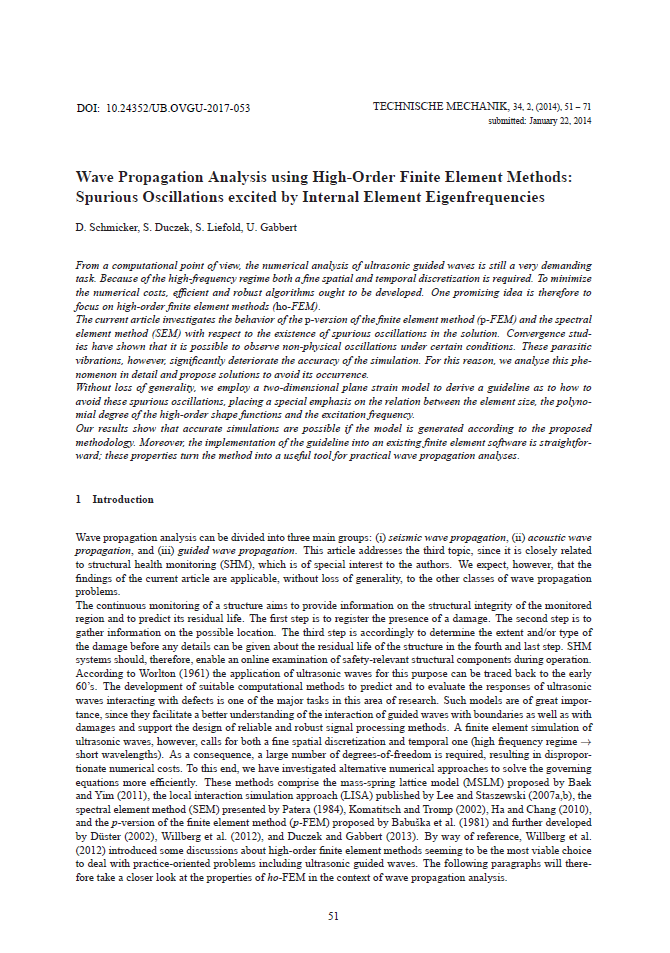Wave Propagation Analysis using High-Order Finite Element Methods
Spurious Oscillations excited by Internal Element Eigenfrequencies
DOI:
https://doi.org/10.24352/UB.OVGU-2017-053Abstract
From a computational point of view, the numerical analysis of ultrasonic guided waves is still a very demanding task. Because of the high-frequency regime both a fine spatial and temporal discretization is required. To minimize the numerical costs, efficient and robust algorithms ought to be developed. One promising idea is therefore to focus on high-order finite element methods (ho-FEM).
The current article investigates the behavior of the p-version of the finite element method (p-FEM) and the spectral element method (SEM) with respect to the existence of spurious oscillations in the solution. Convergence studies have shown that it is possible to observe non-physical oscillations under certain conditions. These parasitic vibrations, however, significantly deteriorate the accuracy of the simulation. For this reason, we analyse this phenomenon in detail and propose solutions to avoid its occurrence.
Without loss of generality, we employ a two-dimensional plane strain model to derive a guideline as to how to avoid these spurious oscillations, placing a special emphasis on the relation between the element size, the polynomial degree of the high-order shape functions and the excitation frequency.
Our results show that accurate simulations are possible if the model is generated according to the proposed methodology. Moreover, the implementation of the guideline into an existing finite element software is straightforward; these properties turn the method into a useful tool for practical wave propagation analyses.





